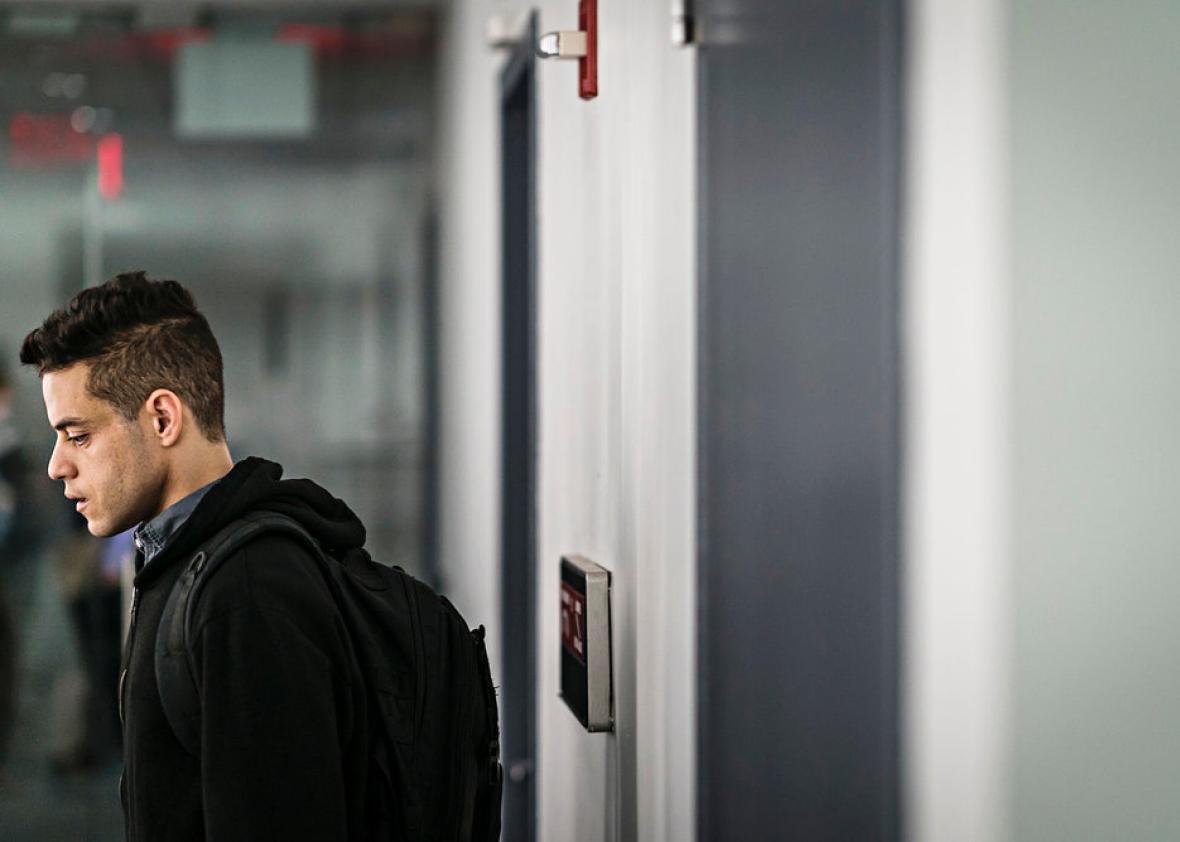Wednesday night’s Mr. Robot, directed by the show’s creator, Sam Esmail, unspooled its entire 44 minutes in one long take (following in the showy footsteps of True Detective’s stash-house robbery and ER’s frequent oners), Esmail’s camera swooping around and outside of Evil Corp’s headquarters with no visible cuts, a technique used by directors to create a heightened sense of realism and tension that matches, in this case, the wired mental state of Elliot Alderson (Rami Malek), Mr. Robot’s alienated protagonist, as he works to keep the Dark Army from blowing up a building full of civilians while grappling with the revelation that his best friend Angela (Portia Doubleday) has betrayed him, Angela herself being the point-of-view character of the second half of the episode, in which you could really see the invisible cuts that make a shot of such length possible,
because that’s the thing: A take of this duration—unlike famous long takes such as the opening crane shot in Touch of Evil, the Weekend traffic jam, or Ray Liotta’s swoop into the Copacabana in Goodfellas—is not comprised of solely one shot, but is more reminiscent of showy cheats like Birdman, constructed from a series of shots that are stitched together, seams obscured, so as to fool the eye into believing that the camera has never cut away though it has, often by using inanimate objects that are relatively easy to match from frame to frame—such as, in Wednesday’s episode, an empty elevator, a computer server, and, most notably, a series of television news broadcasts that gave the impression, as they played, that everyone outside the frame was theatrically changing costumes and running to their new places to jump back on camera in a new position, which probably wasn’t quite the energy Esmail was hoping to convey
since Mr. Robot’s direction, which is much more stylized than most TV shows, has always striven to emphasize unease, loneliness, and jittery momentum with a repertoire of techniques that include not only long takes but “shortsighting” (in which characters are filmed in the lower corner of the frame and alone, even when talking to one another, a practice that accentuates their isolation), a trick also used in this episode—not to mention a showy aerial shot where the camera seemed to slip above the walls of an office building, revealing both the room and the world, at 23 stories high, just outside it—adding up to a directorial tour de force that was also directorial overkill,
the method of filming completely overshadowing the content of the story except for a few moments when the two effectively combined to amplify the painstaking and terrifying real-time commitment Angela has to destroying Evil Corp; in that sequence the style successfully amplified the story’s emotional impact rather than distracted from it, a result one hopes to see more often as ambitious directors continue to flock to episodic television, bringing, yes, a heightened aesthetic, but also a bevy of self-aggrandizing tricks, because however technically impressive, attention-grabbing methods are often just that: empty posturing that twists a story into more and more unnecessarily complex knots for the sake of an arbitrary stylistic decision that may not pay off in the end.
